Low maintenance garden border ideas – 10 easy-care methods
With these low maintenance garden border ideas, time-strapped gardeners can still create inspiring and beautiful planting schemes, without too much effort
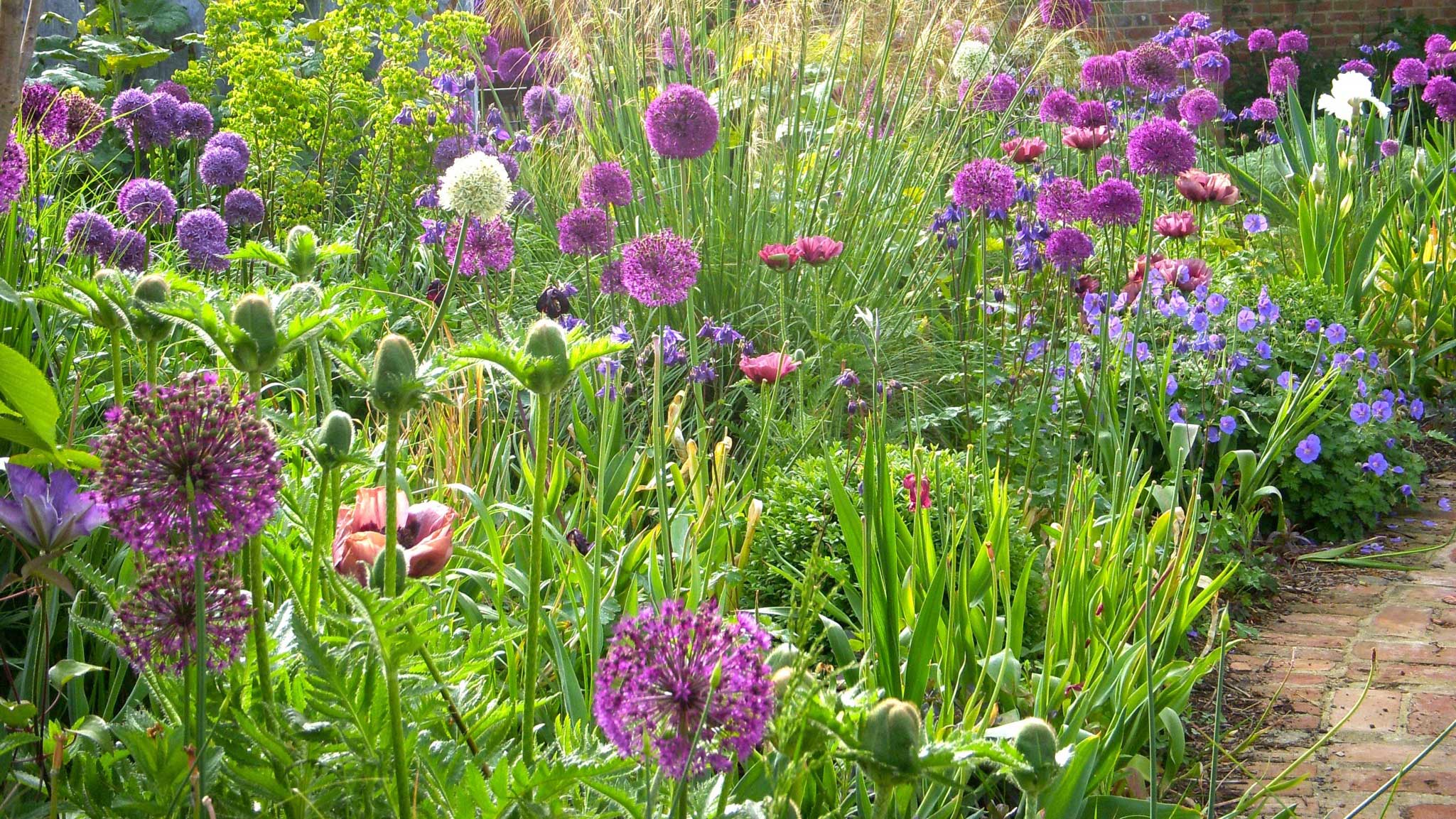

Low maintenance garden border ideas are perfect for those gardeners who, whether due to necessity or preference, do not have as much time or energy to devote to tending to their gardens.
Lack of time does not mean you can't still create beautiful garden beds and borders brimming with color and interest. With careful planning and design as part of your flower bed ideas, it is still possible to enjoy a yard full of variety through the seasons, but with less maintenance required.
10 low maintenance garden border ideas
Not only can a more hands-off approach with low maintenance garden border ideas benefit a gardener, but the plants and wildlife can also reap the rewards of reduced intervention.
Soil health and structure can be improved through no-dig gardening; using native and resilient plants that require less feeding and watering helps to create a sustainable garden; and attracting pollinators and other beneficial insects, improves biodiversity for a wildlife friendly garden.
'Low maintenance garden border ideas doesn’t have to mean evergreen or sterile,’ explains garden designer Sheila Jack.
1. Follow the rule 'right plant, right place'
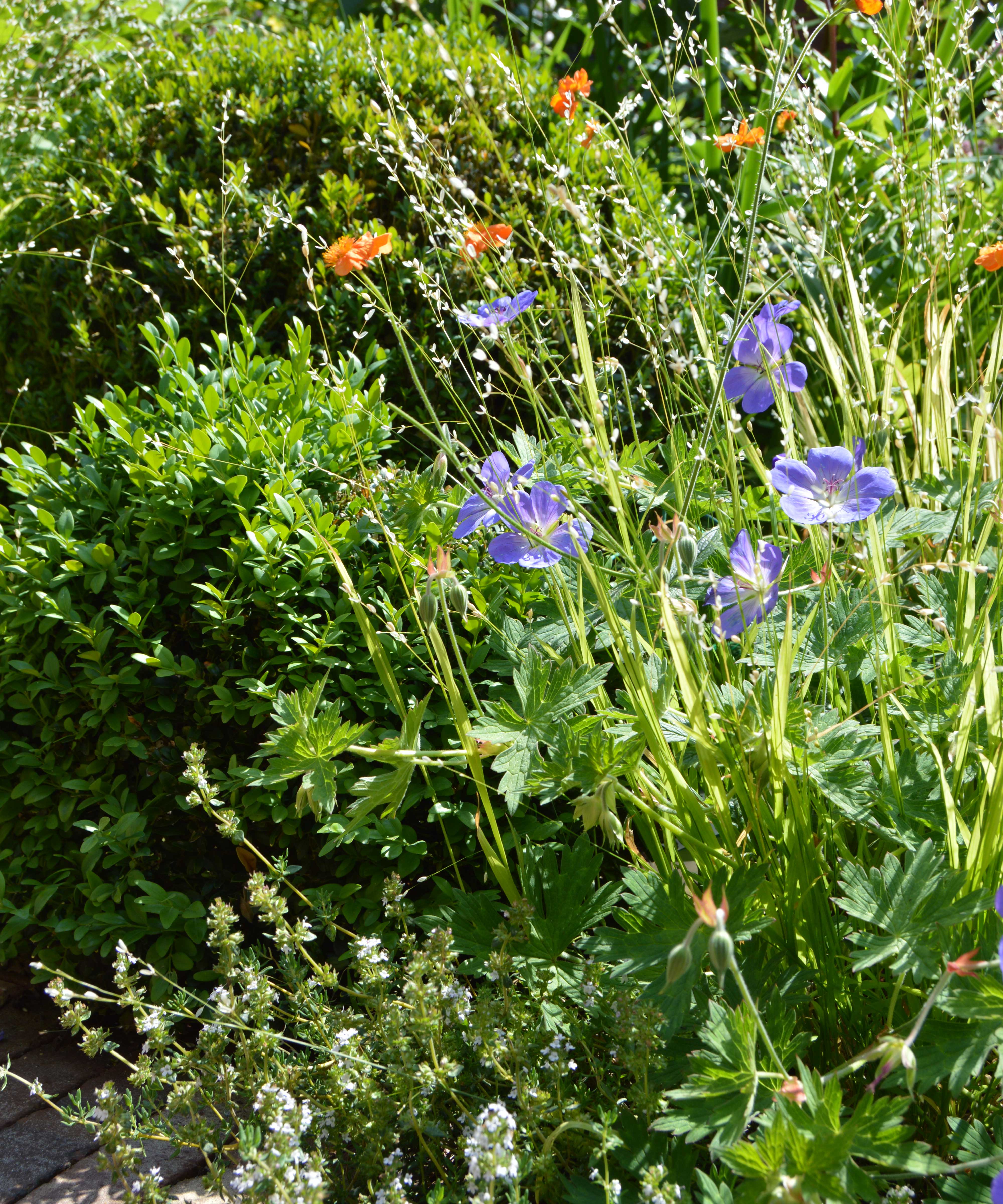
Essential for low maintenance garden border ideas is first choosing the right plants for your site. Assess the conditions, light levels, soil and moisture and choose plants suited to the location.
‘If your border is sunny, look for drought tolerant plants, such as those you would choose if planning a dry garden, which can cope with some neglect through hot spells. Such as Lavandula angustifolia ‘Hidcote’ and Rosmarinus officinalis for evergreen structure, and Echinacea purpurea, Echinops bannaticus for seasonal impact,' explains garden designer Alice Ferguson.
Many of the plants that suit a sunny position are those that can be incorporated in mediterranean garden ideas.
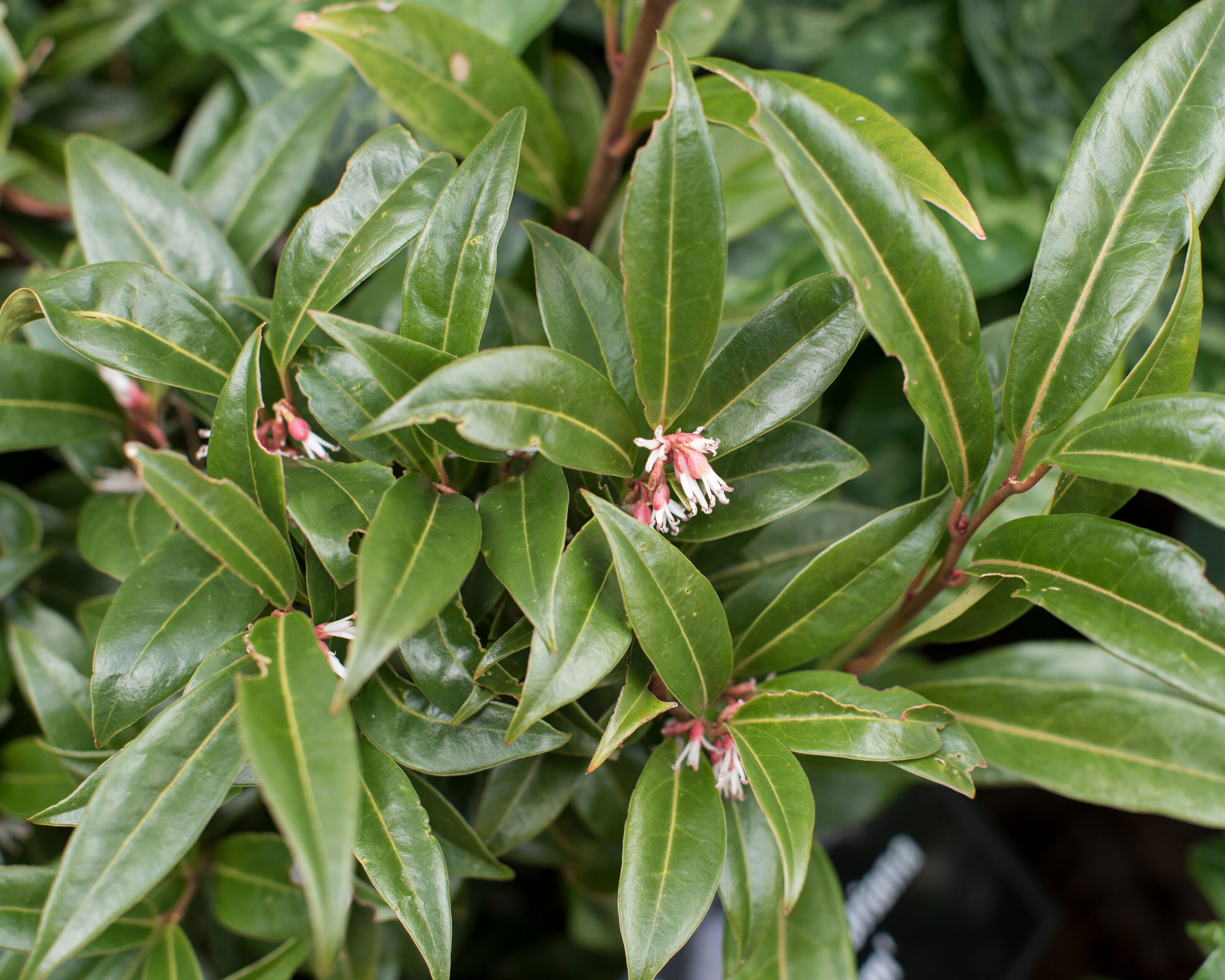
In a border with little sunlight, on the other hand, plants and shrubs for shade will be vital for success. 'Consider a greener border with Sarcococca hookeriana, Mahonia eurybracteata subsp. ganpinensis 'Soft Caress’ and a selection of evergreen and deciduous ferns, such as Dryopteris wallichiana, Polypodium vulgare and Blechnum spicant. Brunnera macrophylla ‘Jack Frost’ and heuchera are great for shady low ground cover,’ adds Alice Ferguson.
Do your research before planting. ‘Select shrubs and plants that will not outgrow the position, so find out how large they will grow overtime and allow them space. Position key shrubs carefully as they are harder to move when larger,’ advises garden designer Sue Townsend.
2. Include resilient plants
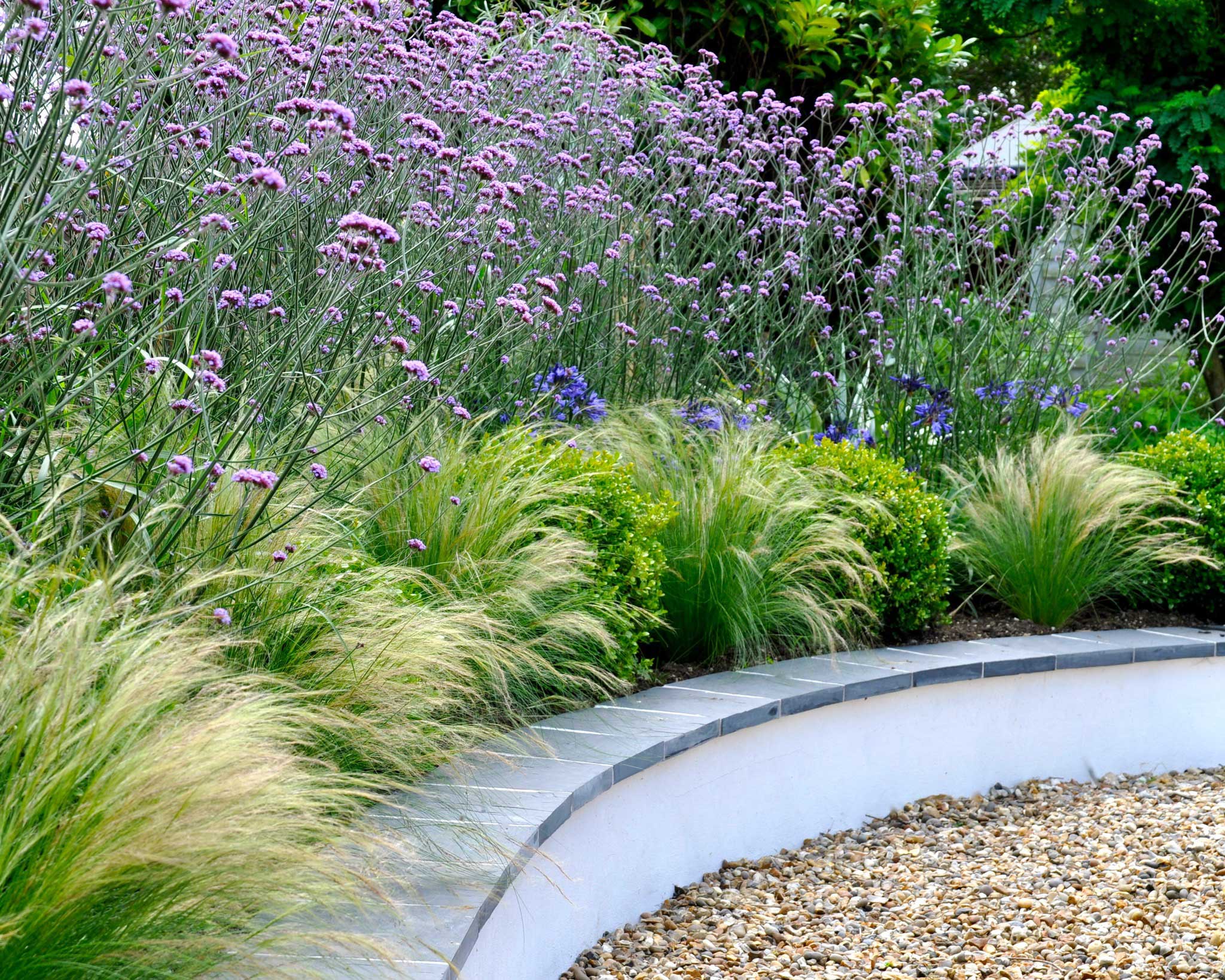
The key to low maintenance garden border ideas is to include in the planting design choices that are tough, consistent and complement each other beautifully.
‘Incorporate resilient plants that, in their natural habitat, could exist as plant communities, and plant at a reasonable density,’ says Sheila Jack.
‘For instance ornamental grasses, such as Sesleria autumnalis and Helictotrichon sempervirens with Achillea ‘Terracotta’, Salvia nemorosa ‘Caradonna’, Echinops ritro ‘Veitch’s blue’ and kniphofia that combine color and form with a long season of flowering and little maintenance.’
‘Hardy geraniums, such as Geranium Rozanne and Geranium psilostemon are excellent for knitting between plants, providing impacting color in the summer and filling in the gaps. Alchemilla mollis has a similar habit, yet with bright lime green colour,’ says Alice Ferguson.
3. Choose low maintenance planting
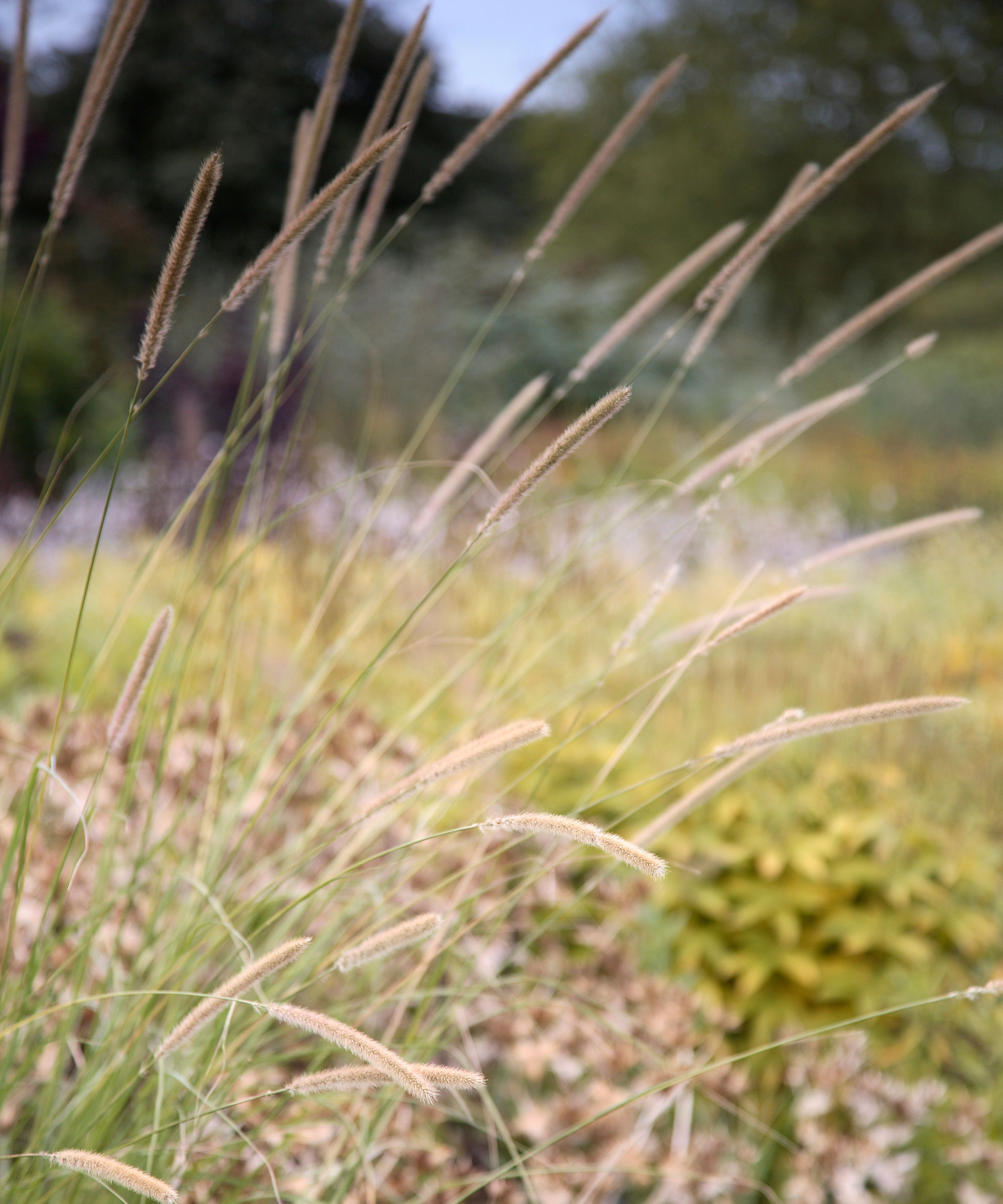
Choose plants that look after themselves and don’t require lots of attention.
‘Avoid plants that need deadheading, such as roses, regular pruning, staking and extra feed, but low maintenance doesn’t have to be a border of solely static shrubs,’ says Sue Townsend.
‘Many grasses, such as Pennisetum Hameln, or Chinese fountain grass, Panicum shenandoah, switch grass, ferns, and perennials, including white gaura, and Hylotelephium ‘Herbstfreude Group’ just require a cut back or comb through to tidy them up once a year. Combine these with a few evergreen shrubs that don’t need pruning, for structure, flowers and fragrance, such as Hebe rakaiensis, Mexican orange blossom, or Daphne x transatlantica Eternal Fragrance, or other flowering evergreens,’ Sue adds.
Position key shrubs carefully as they are harder to move when larger, whereas perennials and grasses are relatively easy to reposition.
If you combine with other organic gardening methods, such as companion planting mutually beneficial plants, you can nurture a plot where the plants happily co-exist and largely look after themselves.
4. Add a backbone of evergreens
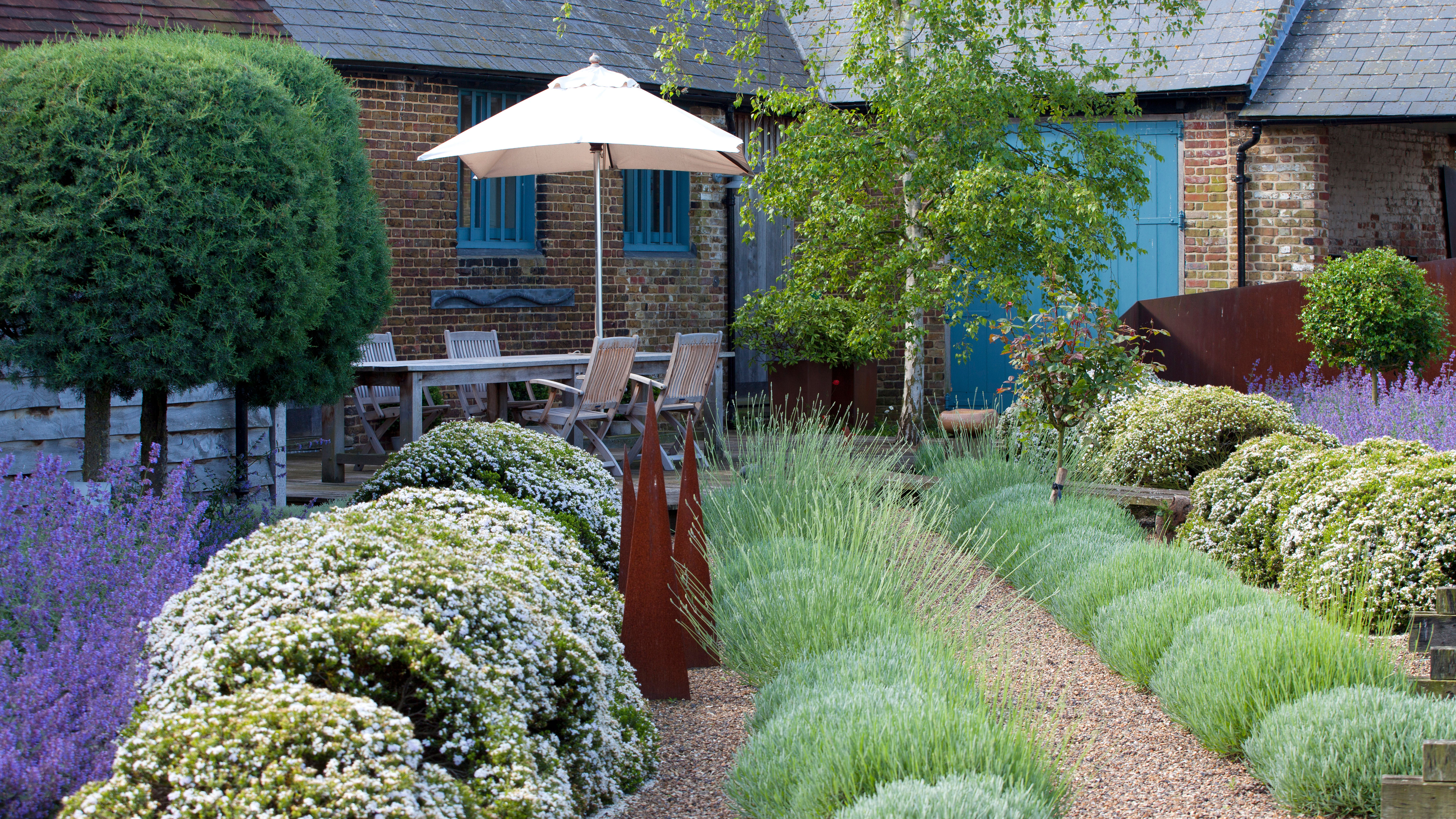
‘Use a backbone of evergreen shrubs with a repeating tapestry of hardy and hard-working perennials with long seasons. Repetition is good for impact, a balanced design and easy maintenance,’ says Alice Ferguson.
To make your flowers go further, learn how to divide plants and perennials as a cost-effective method.
‘Bring your evergreen structure to the front of the border. Once your perennials are starting to die back they will be hidden behind the evergreen shrubs. Providing a tidy appearance
'A repeating plant matrix provides a more cohesive and pleasing design than a border bursting with a huge variety which can appear messy to the eye,’ adds Alice.
5. Use edging for tidy borders
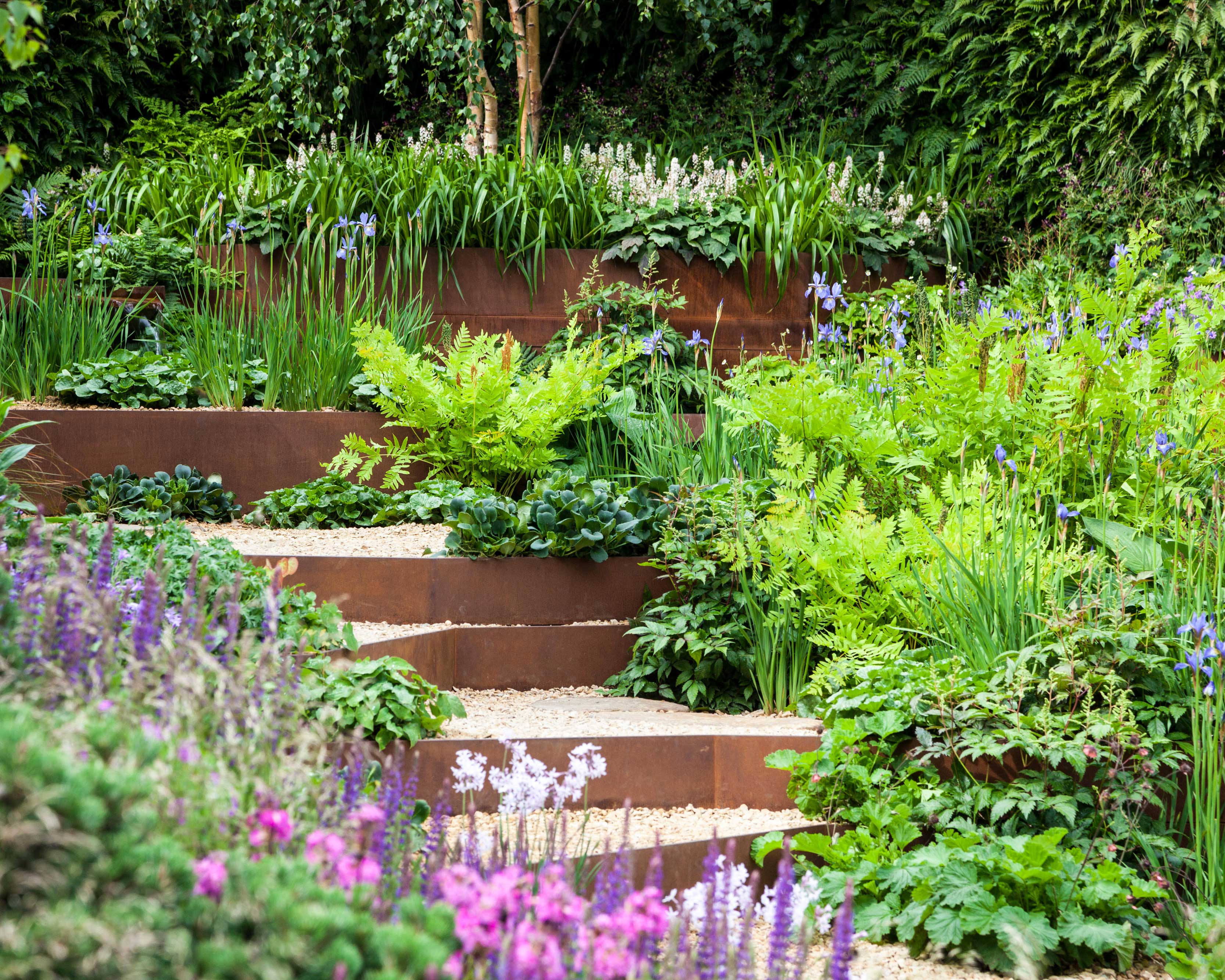
Border edging and Lawn edging ideas is a low maintenance garden border idea to keep borders looking tidy and stops the creep across from paths or lawns. ‘If the border is proud and edging exposed, consider a material worth being on show, such as slate, Corten steel – with its rusty patina – or mild steel for a more contemporary look. Otherwise timber edging to contain the planting within its border has a neat finish and works well,’ says Alice Ferguson.
‘Steel, brick or stone edging, if adjoining a lawn, all work well and can also be used as a mowing strip.
'Raised garden bed ideas can be created in many ways using timber, Corten steel, brick or stone, but do make sure you have thought about watering and drainage,’ adds Sue Townsend.
6. Mulch the low maintenance garden beds
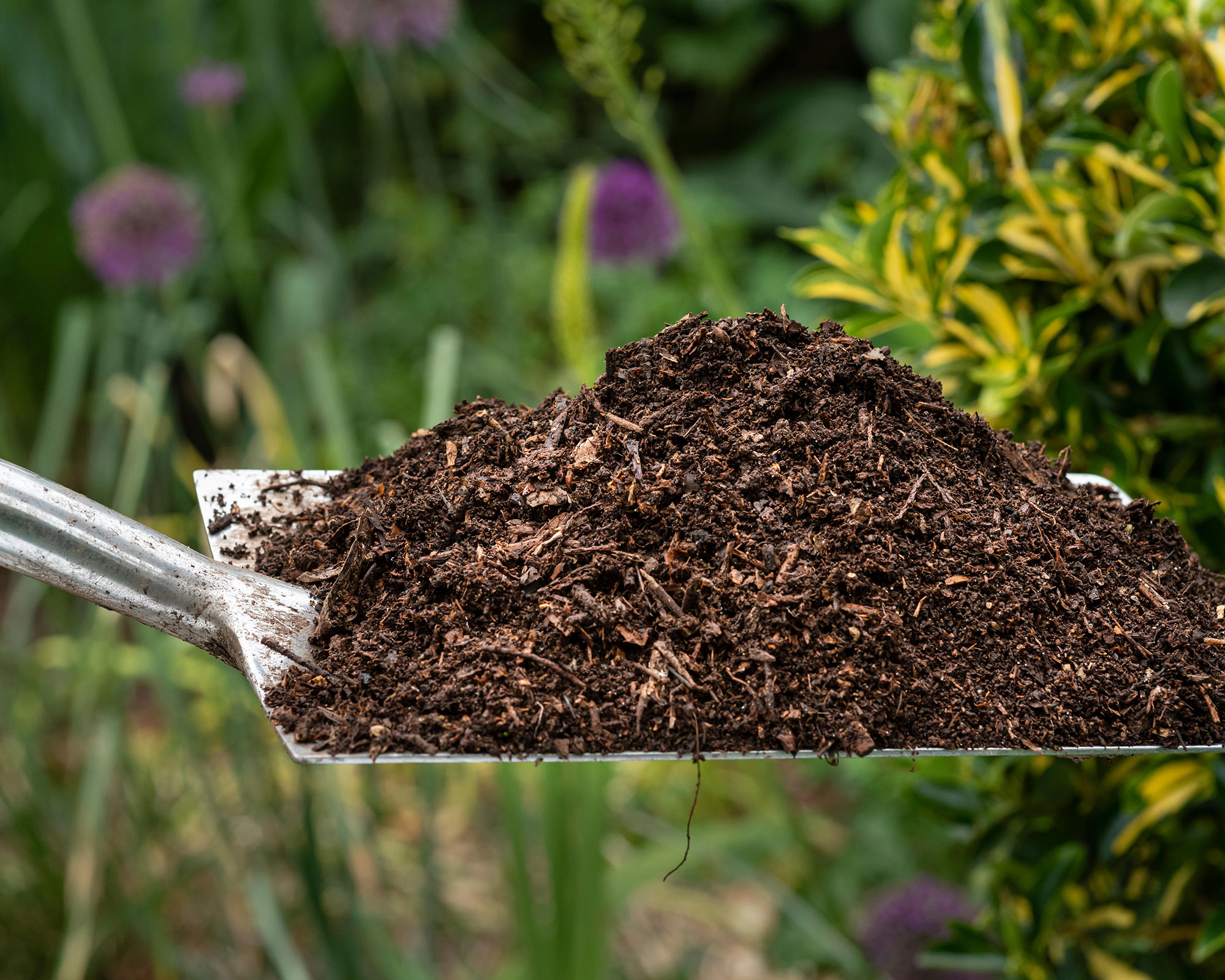
Mulching will help to retain moisture in the soil, reducing the need to water garden beds and borders, and keep weeds down, and is a method used in permaculture gardening for an organic plot.
‘Use peat free compost, homemade compost, or opt for gravel, decorative pebbles or even building waste materials, such as crushed concrete or brick,’ says Sheila Jack.
For other mulching materials, Alice recommends composted woodchips or bark, ‘which also provide a tidy appearance to the border,’ she explains, while organic options to consider include well-rotted horse manure and leaf mulch.
7. Add bulbs for seasonal interest
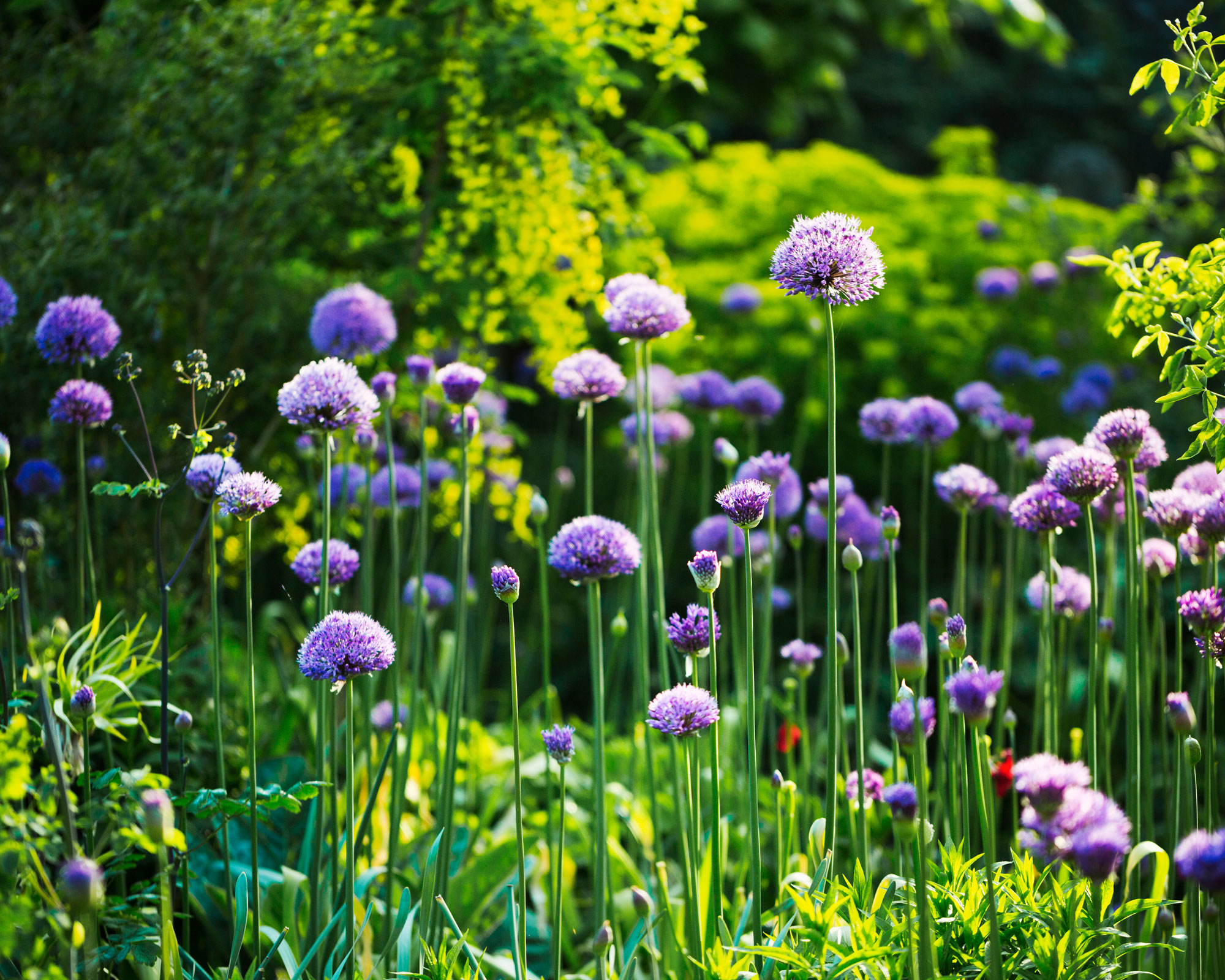
‘Include layers of spring bulbs or summer bulbs, which will naturalize and repeat flower every year,’ suggests Sheila Jack.
‘Snowdrops and narcissuses will grow happily in partial shade. If you have more sunlight, tulips and alliums add a beautiful burst of color. Allium sphaerocephalon, Allium hollandicum ‘Purple Sensation’ also provide beautiful seedheads through the winter months,’ says Alice.
8. Keep a hands-off approach

To maintain interest through the seasons, ‘do one simple cut back in late winter instead of fall. This way you will enjoy the dried seedbeds of the grasses and flowers over the winter,’ says Sheila Jack.
Allow plants to die off where they are so that their decomposition adds to the soil's rich nutrients, and also leave plants to self-seed so that they naturally populate the garden.
9. Use the no-dig method
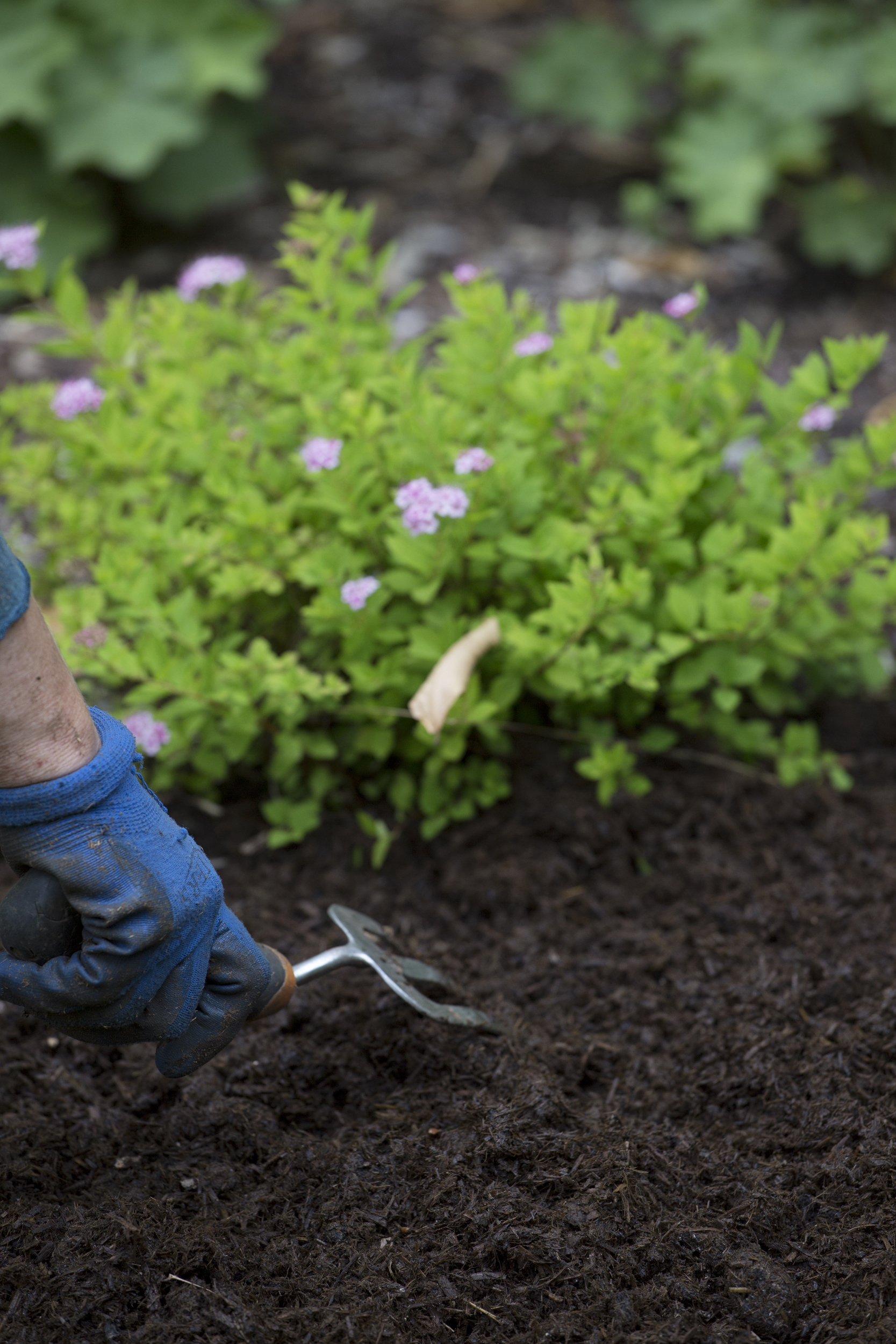
The simple no-dig gardening method requires less time, effort and work as a gardener, so should be top of the list of low maintenance garden border ideas.
‘No dig’ gardening – which involves adding a mulch of well rotted garden compost or mushroom compost in spring and autumn – not only keeps weeds down but keeps the soil healthy,’ advises Sue Townsend.
No-dig, as the name suggests, involves just that, so cancels out the time spent weeding and digging over borders. It improves soil drainage and aeration and garden beds and borders require less watering.
10. Plant in gravel
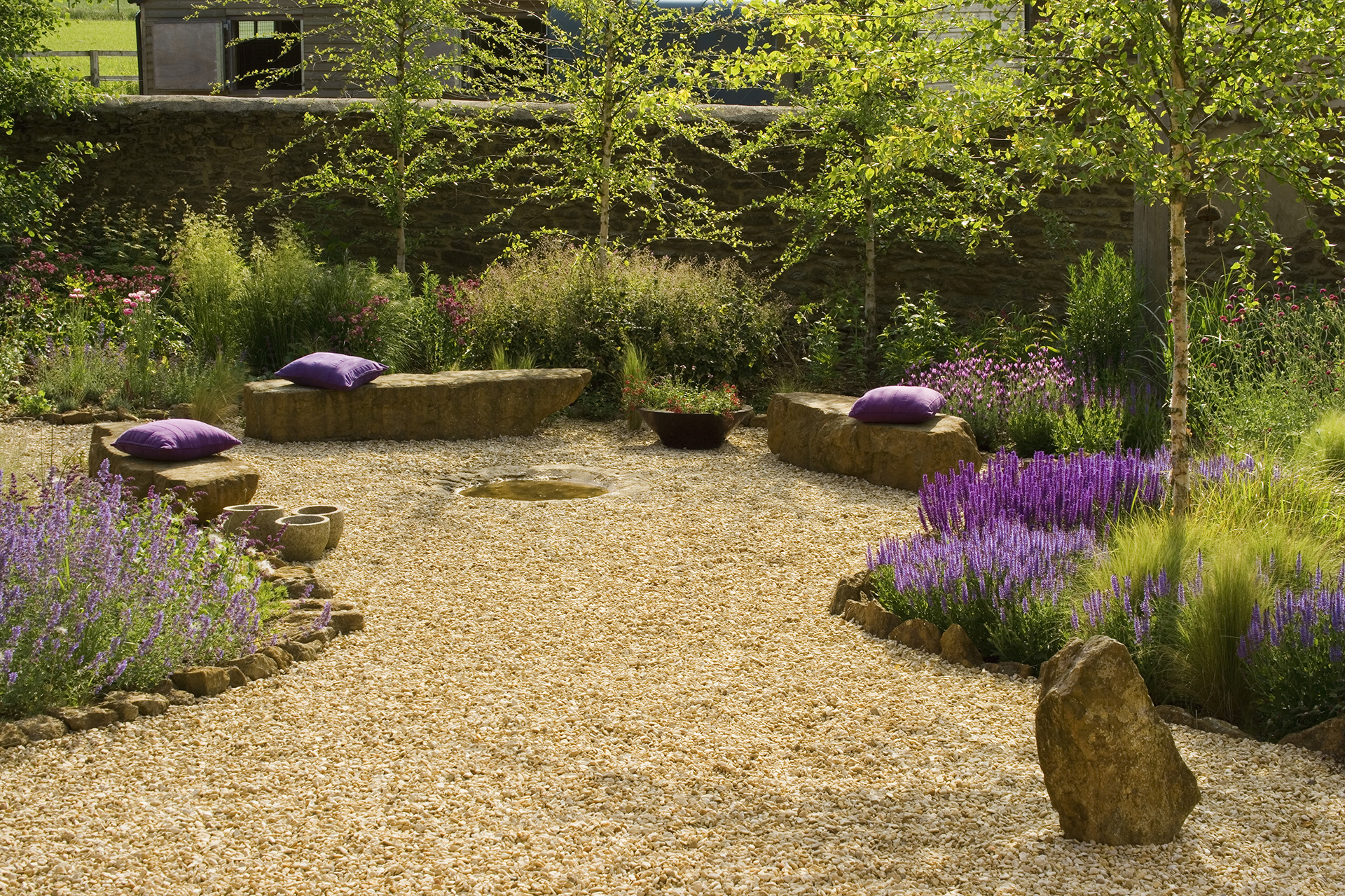
Planting into a deep gravel mulch is among the low maintenance garden border ideas that has inspired Sheila Jack.
‘Rather than planting into existing or imported topsoil, plants are added into a layer of ‘fines’ free gravel, ranging in depth from 10 to 20cm, as a gravel garden idea,' she explains.
'Unlike soil, gravel contains no weed seeds. Rapid drainage ensures that the surface dries quickly, so weed seeds that blow into the planting are unlikely to germinate. Even in the heat of summer, when moist soils are hard and impermeable, gravel plantings are still able to infiltrate rainwater,’ she explains.
How do I make my garden borders low maintenance?
To make your garden borders low maintenance you need to carefully choose the planting so that it will exist happily in the space, with little intervention required from you.
Ways of designing a low maintenance border, advises Sheila Jack, include:
- Choosing resilient, drought tolerant plants.
- Analysing your site conditions to ensure the plants will thrive in the position
- Keeping out weeds – what you start with, you’ll end up with – so aim to eradicate as much of the existing weed material as possible
- Planting at a reasonable density
- Including bulb layers
- Adding a mulch will help retain moisture and is a method for how to get rid of weeds
- Irrigating for the first summer
- Leaving seed heads over fall and winter
How can I make my garden borders look good?
To make your low maintenance garden border ideas look good, include a mix of evergreen shrubs for year-round interest, and hardy perennials and bulbs that will add seasonal color and variety.
Mulching and no dig gardening methods will help to keep weeds at bay, while edging materials or opting for raised beds will help to keep your planting neat and contained.
Sign up to the Homes & Gardens newsletter
Design expertise in your inbox – from inspiring decorating ideas and beautiful celebrity homes to practical gardening advice and shopping round-ups.
Rachel is senior content editor, and writes gardening content for homesandgardens.com, Homes & Gardens magazine, and its sister titles Period Living Magazine and Country Homes & Interiors. She has written for lifestyle magazines for many years, with a particular focus on gardening, historic houses and arts and crafts, but started out her journalism career in BBC radio, where she enjoyed reporting on and writing programme scripts for all manner of stories. Rachel then moved into regional lifestyle magazines, where the topics she wrote about, and people she interviewed, were as varied and eclectic as they were on radio. Always harboring a passion for homes and gardens, she jumped at the opportunity to work on The English Home and The English Garden magazines for a number of years, before joining the Period Living team.
-
 The great bedding debate: top sheet vs no top sheet − which side are you on?
The great bedding debate: top sheet vs no top sheet − which side are you on?I asked an expert panel of bedding designers whether you really need a top sheet to keep clean and cool or if it's just another ploy to make you spend money
By Emilia Hitching Published
-
 Thoughtful modernism – how one Dallas home makes bold contemporary design feel warm, welcoming, and comfortable
Thoughtful modernism – how one Dallas home makes bold contemporary design feel warm, welcoming, and comfortableWith its mix of textural finishes and carefully curated furnishings, this modernist home is a refreshing retreat
By Karen Darlow Published